What do two-year-olds do and say?
Two year-olds use a variety of language forms and strategies to orient themselves in, out and on the periphery of dialogues.
We identified four key ways they did this:
- Nonverbally
- By watching others
- Through utterance chains
- In carnivalesque ways
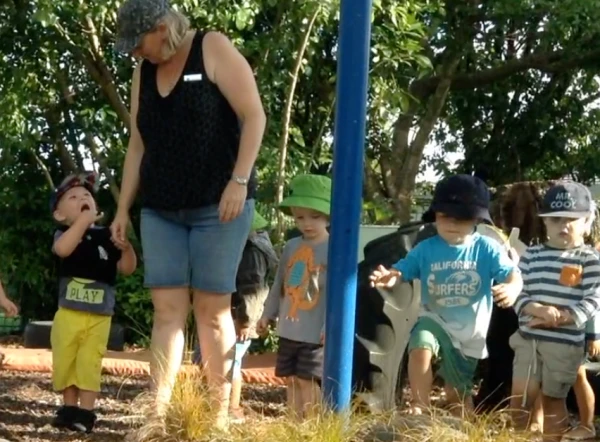
Nonverbal language
In contrast to teachers and their peers, two year-olds used nonverbal language in their dialogues 99% of the time. 43% of these dialogues included verbal language that was used alongside nonverbal language.
Our increased attention to the nonverbal language of two year-olds has led us to place more emphasis on relationships. We've really given them much more attention than we did previously.
Teacher
When we consider that nonverbal language includes body movements, facial gestures and verbal language includes sounds, it is no wonder that teachers had to learn new ways of 'seeing' two year-olds in order to maintain effective dialogues!
Watch the following video of Nathan instructing two year-old Cameron on where to put his gumboots. What nonverbal forms of language do you notice?
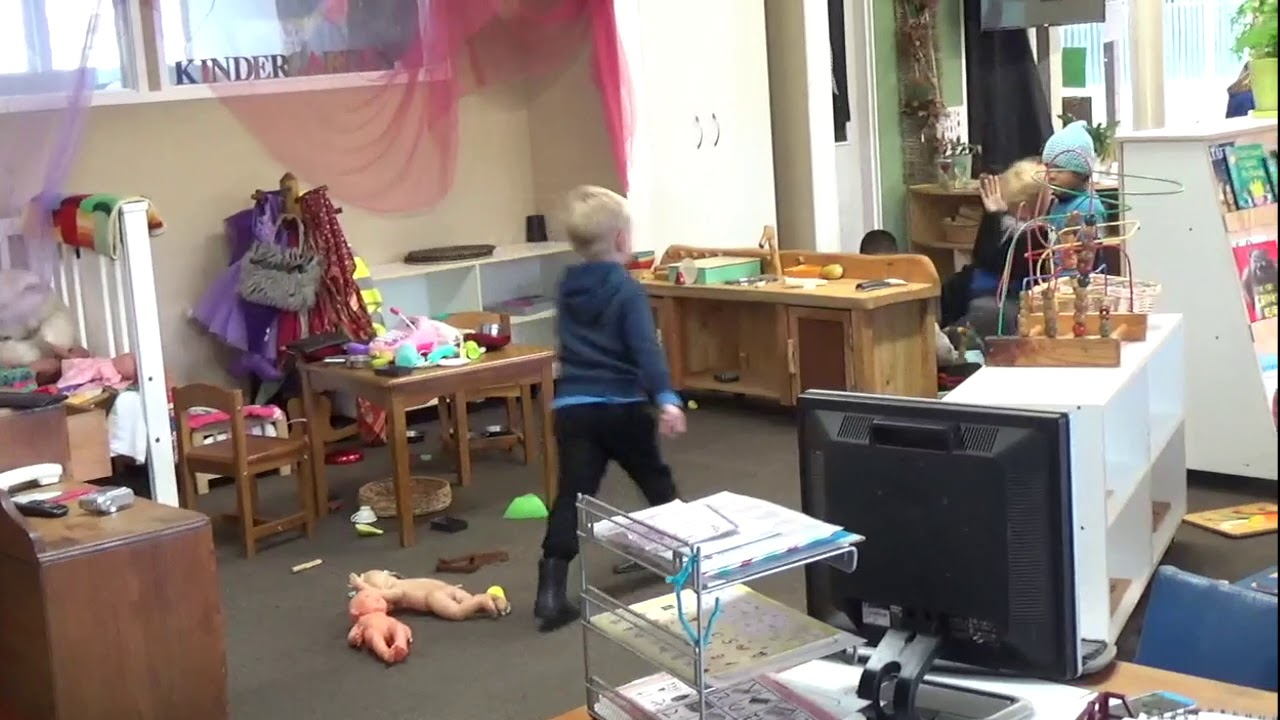
Verbal language for two year-olds is not just a word. It's about the sounds, the shouts, the laughter too, tones and grunts and so on - they all give meaning to the dialogue and we are seeing as well as appreciating these more now. We have actually been quite surprised at how effectively our two year-olds get their communication across. And that their sounds are more often able to be interpreted as meanings. Like Cameron - when it was raining outside, he ran inside with his hands out shouting "raining, raining" - but we would not have heard that before.
Teacher
Watching
"In order for two year-olds to engage in effective dialogues, a great deal of watching is needed - both on the periphery of a genre and also within the genre as they learn how to 'be' in each".
Watch the following video of Legend as he watches on the periphery of a genre , watching 'the group' before he negotiates his way into the genre. Catherine narrates this event based on her insights.
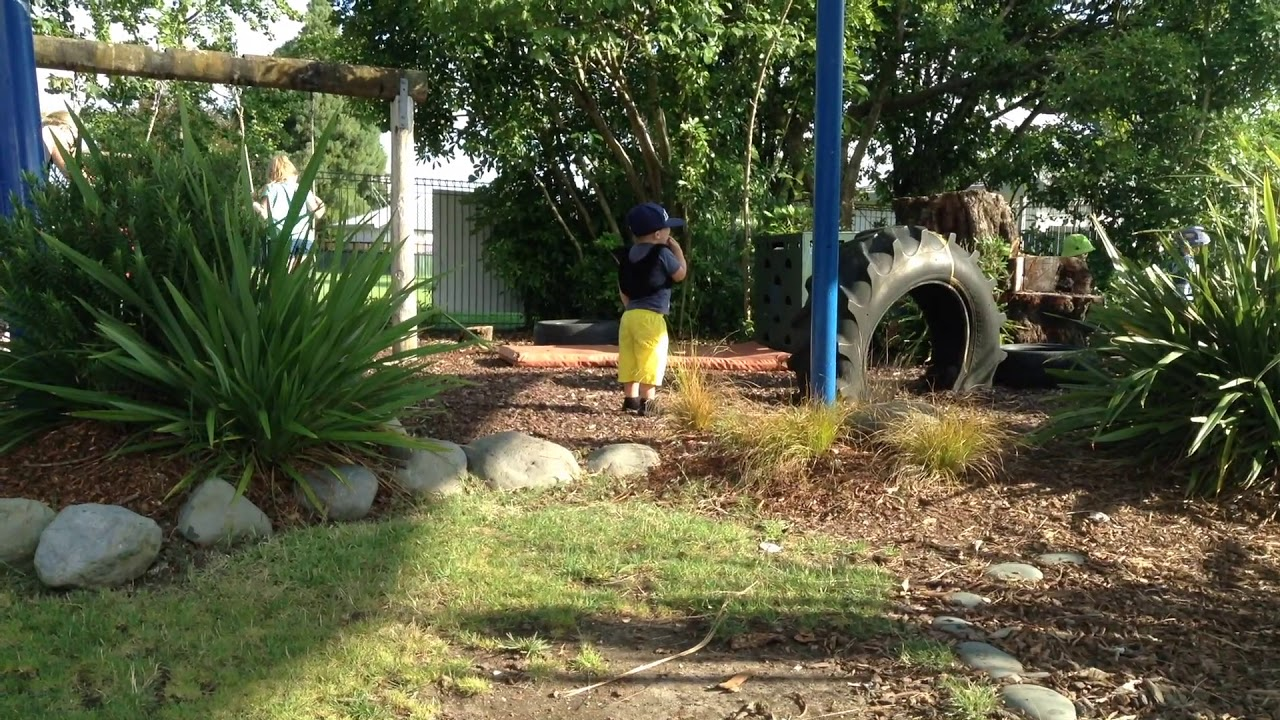
For further reading see Hayashi & Tobin's (2011) The Japanese preschool's pedagogy of peripheral participation article.
Utterance chain
Verbal and nonverbal sequences of language, which when imbued with meaning make up the event-of-co-being.
White & Redder (2017, p. 82)
The following clip offers one example (of many) of an utterance chain that we now see are fundamental to our dialogues with two year-olds.
Watch and listen to the video below which comprises a series of discrete but connected video clips taken over an entire morning as Catherine tells the story of Cameron's use of the haka (a warrior stance often used in rugby) as a way of connecting meanings over time:
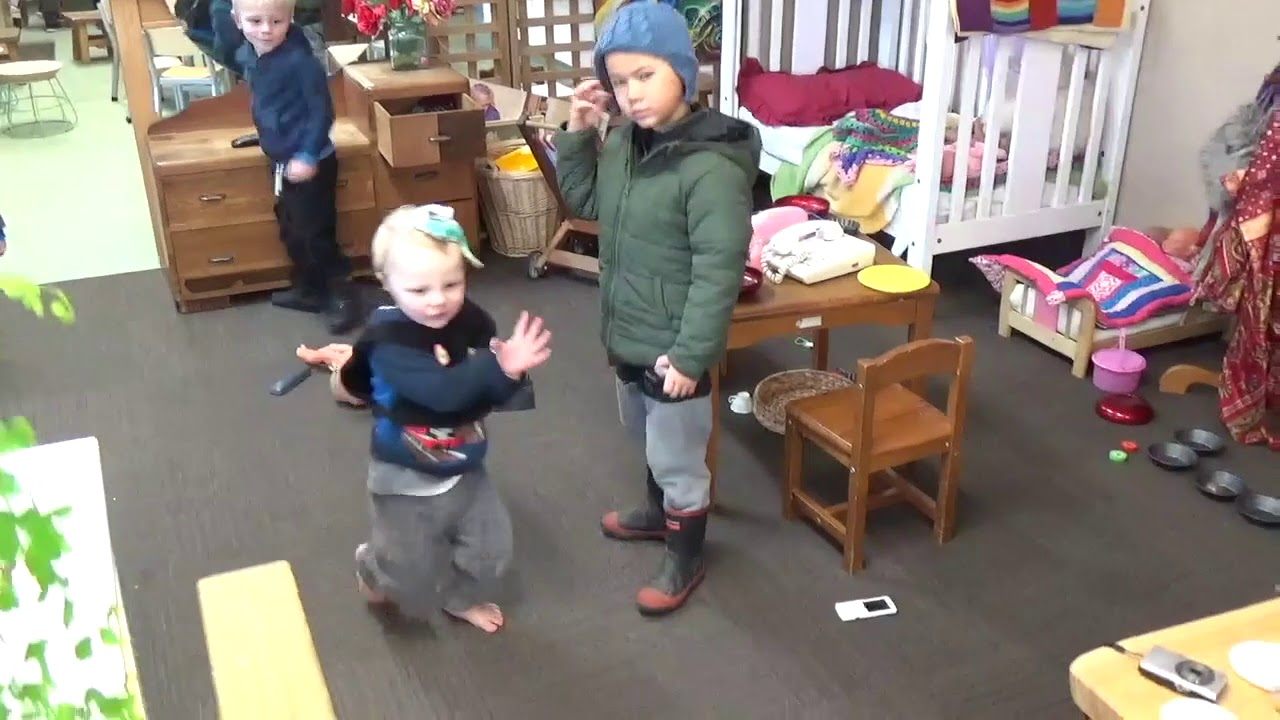
When an utterance chain sparks meaning - a response - it has the potential to become an event of co-being because it generates an intersubjective interaction of mutual significance.
White & Redder (2017, p. 83)
Carnivalesque
A strategy that was often used in effective dialogues with peers can be described as carnivalesque which was often found in the underground spaces that took place outside of the teacher's gaze.
In dialogic pedagogy carnivalesque is given value because it celebrates the capacity of learners to disrupt authority, temporarily, in order to exercise agency.
We have seen and valued underground acts as really important aspects of two year-old engagement in dialogues in the ECE space. They allow them to engage with peers. This concept helps us to recognise the need to tolerate these acts as potential acts of resistance and peer cohesion which allow two year-olds to exercise their agency. We have moved further away from an emphasis on obedience towards an understanding of the importance of creativity and individuality - a modus operandi.
Teacher
Initially, teachers didn't recognise these acts or their learning potential. Listen to Bridgette discuss her insights for pedagogy, once these are given presence, as you watch the following video clip:
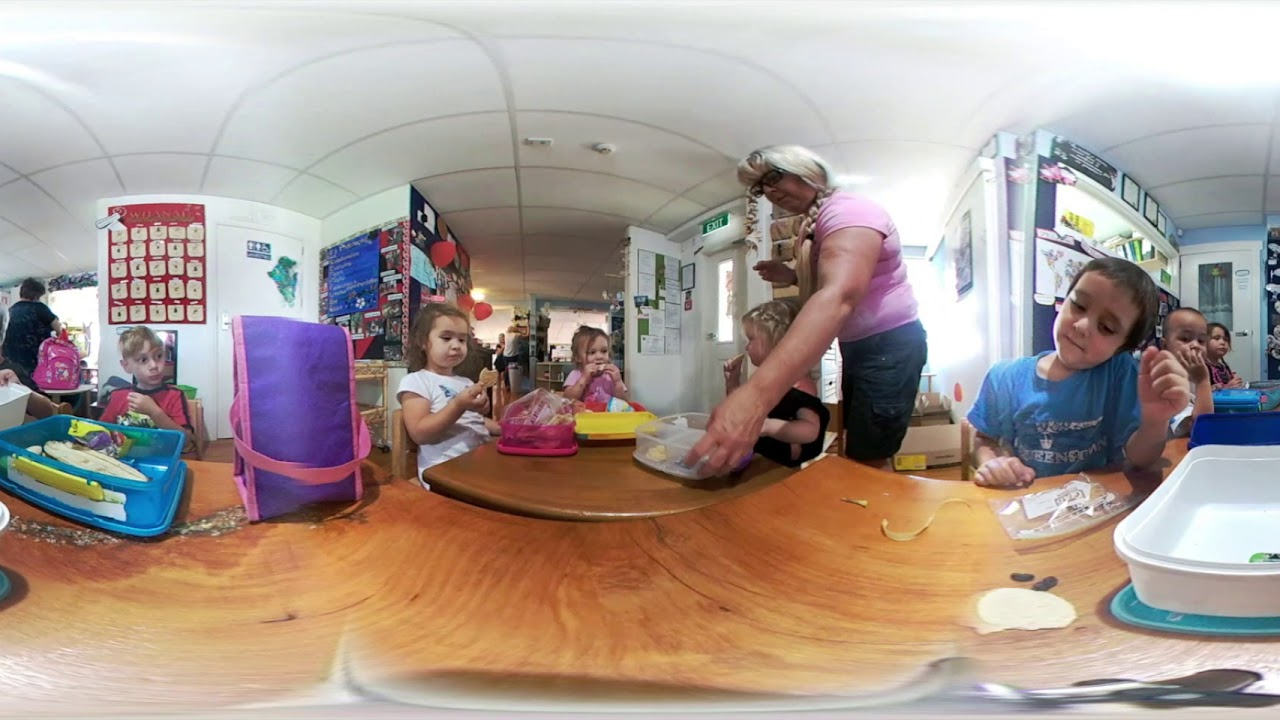
Read the following papers to gain further insight into carnivalesque:
- A Feast of Fools: Mealtimes as democratic acts of resistance and collusion in early childhood education.
- Are "you avin a laugh?": A pedagogical response to Bakhtinian carnivalesque in early childhood education.